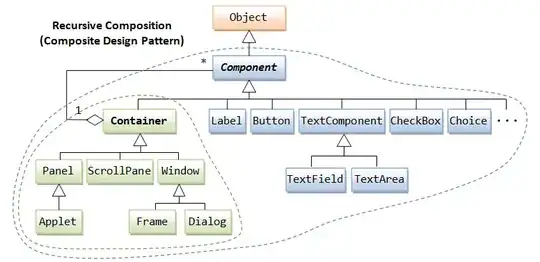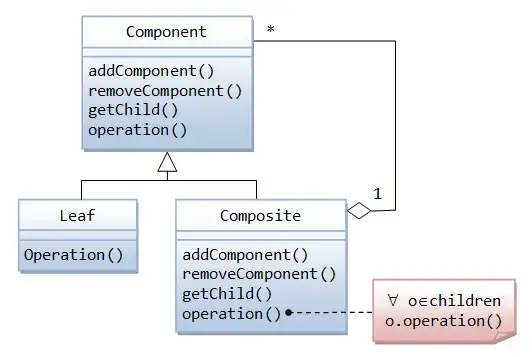What you are looking at in the first diagram is how the AWT classes in Java use the Composite Pattern so that they are able to compose together elements in a larger element of the same type. The second diagram shows the generalized form of the Composite Pattern.
The Composite Pattern
In order to understand the composite pattern, let's use a more concrete example for a better perspective. First, we have a super class (could also be an interface) Vehicle for things that drive on the road, like cars, trucks, 18-wheelers, etc:
public abstract class Vehicle
{
public void drive(int distance) {
System.out.println("Drove " + distance + ". Vroom vroom!");
}
public abstract int getWeight();
// etc.
}
Now we also have a concrete class for a car:
public class Car extends Vehicle
{
protected int weight;
// ...
@Override
public int getWeight() {
return this.weight;
}
}
We also have a class for a car carrier, which is a vehicle that can contain other vehicles:
public class CarCarrier extends Vehicle
{
protected int weight;
protected Vehicle[] cars;
// ...
@Override
public int getWeight() {
int weight = this.weight;
for(Vehicle car : cars) {
weight += car.getWeight();
}
return weight;
}
}
As we can see in the getWeight method of CarCarrier, we have to calculate the weight of the car carrier as its weight plus the weight of the cars it carries. Thus the getWeight method of CarCarrier calls the getWeight method of each of the child Vehicles in the cars array. The Car class corresponds to the leaf, and the CarCarrier class corresponds to the composite.

The above formula, describing how the composite's operation method should work, basically translates into "for each child, we'll call it 'o', in children, we have to call the operation method on o when the composite's operation method is called." This corresponds to how we called the getWeight method of each of the Vehicles being carried by the CarCarrier to get the total weight of the CarCarrier.

 So,
So, 